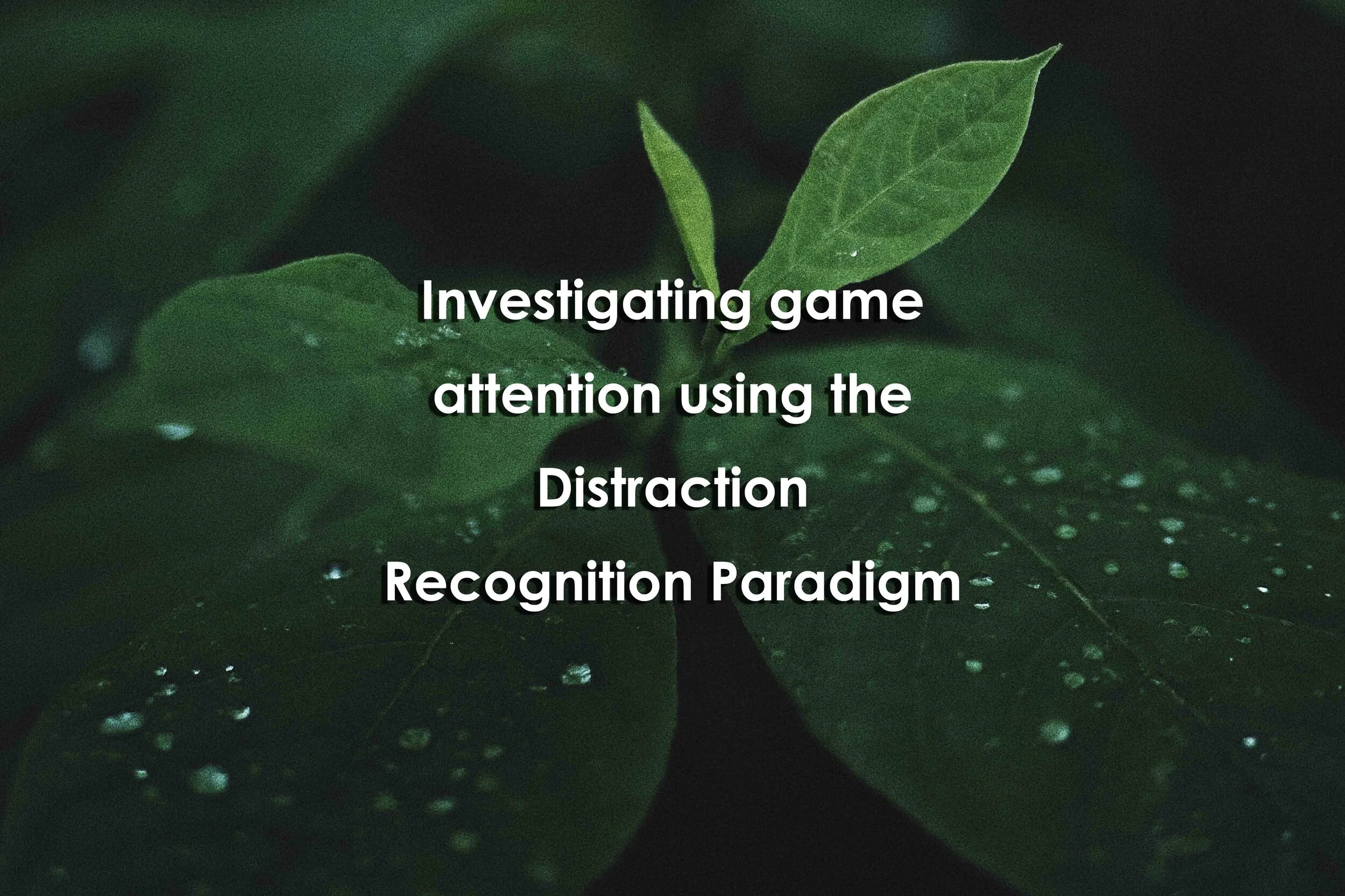Investigating game attention using the Distraction Recognition Paradigm
Investigating game attention using the Distraction Recognition Paradigm
Investigating game attention using the Distraction Recognition Paradigm
Joe Cutting, Paul Cairns
Abstract
"Digital games are well known for holding players’ attention and stopping them from being distracted by events around them. Being able to quantify how well games hold attention provides a behavioral foundation for measures of game engagement and a link to existing research on attention. We developed a new behavioral measure of how well games hold attention, based on players’ post-game recognition of irrelevant distractors which are shown around the game. This is known as the Distractor Recognition Paradigm (DRP). In two studies we show that the DRP is an effective measure of how well self-paced games hold attention. We show that even simple self-paced games can hold players’ attention completely and the consistency of attentional focus is moderated by game engagement. We compare the DRP to existing measures of both attention and engagement and consider how practical it is as a measure of game engagement. We find no evidence that eye tracking is a superior measure of attention to distractor recognition. We discuss existing research on attention and consider implications for areas such as motivation to play and serious games."
Reference
Cutting, J., & Cairns, P. (2020). Investigating game attention using the distraction recognition paradigm. Behaviour & Information Technology, 1-21. https://www.tandfonline.com/doi/abs/10.1080/0144929X.2020.1849402?journalCode=tbit20
Keywords
games, attention, engagement, distraction, self-paced
Category
engagement

